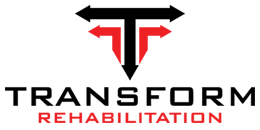Muscular Torticollis
What is Muscular Torticollis?
Congenital Muscular Torticollis occurs in infants when the neck musculature is shortened at birth or shortly thereafter. Typically, the infant presents with his/her head tilted with the chin pointing to one shoulder while the head tilts toward the opposite shoulder. Physician diagnosis is important so that your child can get treatment. If not corrected, your infant will be unable to move his/her head properly and permanent muscle tightening with asymmetry of the neck and face can result. If left untreated, this can also create a “flat spot” on the back of your child’s head. This condition can also create a delay with developmental milestones; such as rolling over.
Symptoms of Congenital Muscular Torticollis
- Baby’s head is tilted to one side; the chin points to one shoulder and the head tilts toward the opposite shoulder. This is the position your child will keep his/her head in at rest.
- You may notice that your baby cannot move his/her head as well as other babies.
- You may also notice a lump in your baby’s neck musculature.
How We Treat Muscular Torticollis
- Gentle manual stretching exercise program – to help relieve the tension and lengthen the musculature
- Infant stimulation to help the infant learn to move and stretch the muscles in different ways.
- Use of gentle soft tissue massage to relax the baby’s muscles.
- Educate parents on appropriate exercises at home, positioning for baby’s head and body (i.e., while feeding/nursing, sleeping, laying on back, belly or side, in carseat, or while being carried.)
*Services are not available at all locations. Call or click the location page near you for that center’s services.
What to Expect
Every patient has a unique health history, diagnosis and personal goals. When you come for your first appointment, we will create a personalized treatment plan for you.
We work with most major insurance providers and do our best to help keep the paperwork pain-free. If you’d like to confirm your insurance coverage, please let us know and we can verify when you schedule. If your insurance provider requires a co-pay, we will ask for this payment at each visit. We accept payments by cash, check or credit card.
When to Arrive
On average, a patient’s first visit lasts about an hour. We typically ask patients to arrive 15 minutes early to sign-in, complete paperwork and/or change clothes.
What to Bring
On your first visit, you’ll need to bring your physician referral or prescription (if needed), your insurance card, your primary registration forms, your ID or driver’s license and your co-payment (as applicable). If desired, you may bring a change of clothing.
How it Works
During your first visit, your physical therapist will do an initial evaluation and discuss your plan of care. The therapist uses this information to set goals for your continued treatment. Physical therapy goals may include improved movement, strength, endurance and flexibility, as well as decreased pain. Your subsequent visits will focus on treatment that is based on your diagnosis and individualized goals.
